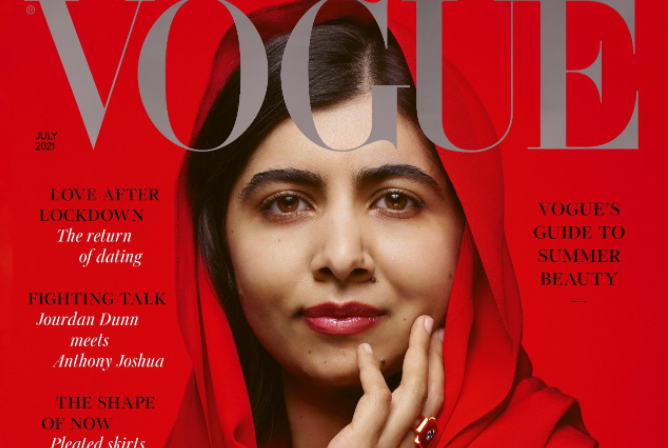It has been wonderful to see a resumption in all sporting activities after all the cancellations we saw last year due to the global pandemic.
I for one have thoroughly been enjoying the return to sporting events, which made an illness-induced stay-at-home period bearable: first Wimbledon, then the Euro cup, and then the much-awaited Olympic games in Tokyo. Amidst the excitement of watching some great matches, though, my focus shifted to a topic that always used to be at the back of my mind while watching women’s sports, be it volleyball, gymnastics, or figure skating.
Now, however, what transpired left me speechless: dumbfounded, I stared in disbelief as I read of how the European Handball Federation had fined the Norwegian women’s team €150 per player for wearing spandex shorts instead of the stipulated bikini bottoms. While men wear tank tops and long shorts, the women are required to wear bikini bottoms “with a close fit and cut on an upward angle toward the top of the leg.”
I think the real issue at hand here is the fact, that even in 2021, women are being told what they must or mustn’t wear because, despite so-called women’s emancipation, women’s bodies are still objectified. How else do we explain these double standards in dress regulations for male versus female athletes? Is there any justification for the fact that the men can wear baggy shorts and tank tops, but the women have to wear bikinis?
This action of the disciplinary committee of the European Handball Federation created quite an uproar internationally, with support for the Norwegian team pouring in from all over the world and celebrities offering to pay the fines for the team. Apparently, the team’s coach Eskil Berg Andreassen told news reporters that the Norwegian players had been fighting for several years for their right to wear alternatives other than the stipulated uniform of bikini bottoms. They had decided enough was enough and wanted to put an end to this discriminatory sexualization of sport, which potentially keeps a lot of good players, especially from many Eastern countries, away because of the excessively immodest uniform.
The trend seems to be gaining momentum; soon thereafter we saw the German gymnastics team at the Olympics follow suit: breaking with the dress code conventions, they opted to wear full-length unitards, covering the legs right down to the ankles instead of the customary high cut leotards worn by most female gymnasts. The move is a statement against “sexualization” in gymnastics. According to the German Gymnastics Federation: “The aim is to present themselves aesthetically—without feeling uncomfortable.”
German gymnastic team decided to wear unitards (full bodysuits) to protest against sexualisation. Norwegian Hand ball team ditched bikinis for shorts and were fined.
These young women and finest athletes of their era are challenging the sexist rules at the Olympics. About time! pic.twitter.com/A2KvpRlVuo
— Nomboniso Gasa (@nombonisogasa) July 28, 2021
These developments are like a breath of fresh air, a much-needed step and stance in the right direction for women to be able to choose what they prefer to wear. Clothes that don’t make them feel uncomfortable, which allow people to focus on their sporting skills rather than serving as entertainment and a means of attracting larger audiences.
However, this is only one side of the equation. My thoughts then turned to another debate and what to my mind is an erroneous assumption, one which has been touted frequently in the West: namely, how Muslim women are so oppressed because they dress so conservatively, with many, though by no means all, wearing some form of a hijab.
For those of you who may not be familiar with it, the word hijab is an Arabic term meaning barrier or partition. Though the most common visible form of a hijab is the headscarf worn by many Muslim women, we find many variations of it in the form of the body-covering burqa or the niqab, which covers the full face except for the eyes.
We have seen this side of the coin in Europe, most glaringly in France, which was the first country to introduce the ban on the full-face veil in 2011. President Nicolas Sarkozy, categorically stated that veils were a sign of oppression and were “not welcome” in his country. In 2016, France went so far as to instate the controversial ban on the “burkini.” It was later overruled, but again my question is why should anyone else decide what a woman feels comfortable wearing?
To me that argument is as flawed as saying that wearing a bikini or mini-skirt is a sign of emancipation. How are the two related? Can I not be emancipated and forward-thinking, if instead of a bikini, I wear a “burkini,” the name given to the women’s full-bodied swimsuit? How is the amount of skin I display reflective of my thoughts and ideologies?
Interestingly, it isn’t just Muslim women or women from more conservative Eastern cultures who are challenging and fighting these rigid restrictions rooted in Western ideas of femininity. Serena Williams, the world’s number one tennis player, daringly wore a black catsuit during the French Open in 2018. The French Tennis Federation cited it as “disrespectful” to the game and later instituted a ban against it.
The crux of the matter is that women should be allowed to wear whatever they feel comfortable wearing and not be dictated to. It should be their right to be able to choose what they decide to wear, be it a bikini bottom or a full-length unitard.
What we need to understand and take into consideration is how communities are no longer isolated, defined by their own stories. Interdependence of cultures, emergence of global networks challenge previous forms of identity and authority.
The world is continuing to get smaller, through mass media, international travel, diverse make-ups of neighbourhoods. A new global society is taking shape and for the sake of multiculturalism, there needs to be a more liberal policy of global tolerance, reflective of this change. The International Sports Federations, and governments in general, need to adopt policies that are more inclusive, in an effort to assimilate ethnic and religious minorities.
Halima Aden is Vogue Arabia’s new Diversity Editor-at-Large. Her new role includes contributing to a monthly column highlighting hard-hitting social topics, inspiring personalities, and committed organizations with impactful work. pic.twitter.com/55jqXgklLe
— Couture is Beyond (@CoutureIsBeyond) June 18, 2020
It took over a hundred years, for the likes of Halima Aden, a hijabi model, and most recently Malala Yousafzai, Nobel Laureate, best known for championing the cause of girls’ education, to be featured on the cover of the British Vogue, the mainstream European magazine, wearing a headscarf. Despite the dictates of fashion in mainstream Western society, they stayed true to their own culture and beliefs, serving as a role model to so many. Their stance clearly sent the message that one should stay true to one’s own self, not giving in to any societal pressures.
In the words of Malala:
“When we follow our traditional dress, we’re considered to be oppressed, voiceless, or living under a patriarchy. I want to tell everyone that you can have your own voice within your culture, and you can have equality in your culture.”
I know the power that a young girl carries in her heart when she has a vision and a mission – and I hope that every girl who sees this cover will know that she can change the world. Thank you @BritishVogue, @Edward_Enninful & @thedalstonyears pic.twitter.com/3OYejo5Hnm
— Malala (@Malala) June 1, 2021
The collective desire for change seems to be gathering momentum. Women have been less willing to accept the status quo, and are using their collective power to push for change.
References:
https://www.cnn.com/2021/07/20/sport/norway-handball-shorts-fine-intl-scli-spt/index.html
https://www.washingtonpost.com/sports/olympics/2021/07/25/german-gymnastics-unitards-olympics/
https://www.bbc.com/news/world-europe-13038095
~









Read 61 comments and reply